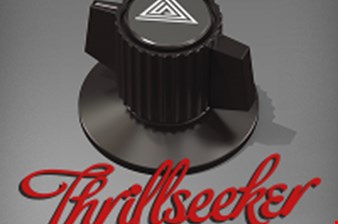Vintage Broadcast Limiter by Variety of Sound

Variety of Sound / Vintage Broadcast Limiter
Vintage Broadcast Limiter
0 reviews | You must Create an Account and Log in to rate and review products.
Bringing mojo back – Thrillseeker VBL is an emulation of a “vintage broadcast limiter” following the classic Variable-Mu design principles from the early 1950′s. They were used to prevent audio overshoots by managing sudden signals changes. From today’s perspective, and compared to brickwall limiters, they are rather slow and should be seen as more of a gain structure leveler, but they still are shining when it comes to perform gain riding in a very musical fashion – they have warmth and mojo written all over.
Go to site
Vintage Broadcast Limiter by Variety of Sound
Thrillseeker VBL is a “modded” version, which not only has the classic gain reduction controls but also grants detailed access to the amount and appearance of harmonic tube amplifier distortion occurring in the analog tube circuit. Applied in subtle doses, this dials in that analog magic we often miss when working in the digital domain, but you can also overdrive the circuit to have more obvious but still musical sounding harmonic distortion (and according side-effects) for use as a creative effect.
On top, Thrillseeker VBL offers an incredibly authentic audio transformer simulation which not only models the typical low-end harmonic distortion but also all the frequency and load dependent subtleties occurring in a transformer coupled tube circuit, and which add up to that typical mojo we know from the analog classics. This would not have been possible with plain waveshaping techniques but has been realized with my innovative Stateful Saturation approach, making it possible to model circuits having a (short) sort of memory.
ThrillseekerVBL is a freeware VST audio plug-in for Windows x32 and you can download a copy in the Downloads section.
modeling the distortion in Thrillseeker VBL
It’s so important to get the non-linear modeling right if we would like to have a sort of analog feel in the digital domain. I can’t stress this ever enough since it still seems to be a common practise in todays audio plug-in design to just throw in a static waveshaper, oversample it and hope this will make everything alright. Not! Even worse, in a recently released plug-in I saw the static waveshapers curve not being continuous again and I’m not going to talk about the sound.
But what should one expect to hear if the analog modeling is just done right? Only by driving the gain of the unit but way before we notice the obvious distortions there appear different by-products caused by circuit side-effects. Depending on the actual device, circuit and components, it might be that the signal starts just getting thicker and more mid-focused, as an example. Or, the signal might appear much deeper and bigger in other cases.
Whatever it might be in particular, I do call this the “Mojo” of the device – it’s not the primary intention of the device but turns out to be a sort of an added sugar. Such effects are highly frequency, transient and gain structure dependent and this is what makes the processed signal to be much more vibrant and alive. Furthermore, the obvious harmonic distortions are not introduced abruptly but they emerge gradually.